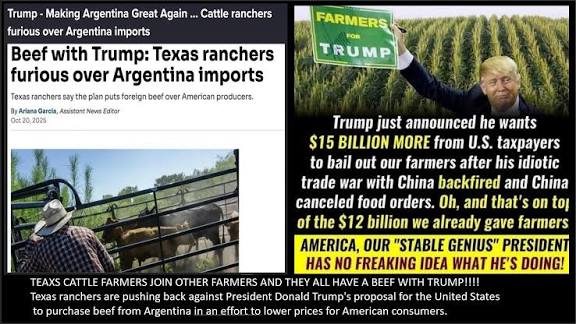2025 Election Shock: New Poll Shows Trump’s Support Collapsing Among Independents

President Trump faces record-high disapproval ratings among core supporters as 76% of voters view the economy negatively. Today we will discuss about 2025 Election Shock: New Poll Shows Trump’s Support Collapsing Among Independents
2025 Election Shock: New Poll Shows Trump’s Support Collapsing Among Independents
The American political landscape in 2025 is shifting at a speed few analysts predicted. A new wave of national polling has delivered a dramatic jolt to Washington: Donald Trump’s support among independent voters is collapsing — and fast.
Independents, once a core reason for Trump’s successful comeback in 2024, now appear to be turning away in surprising numbers. While Republicans remain largely loyal and Democrats overwhelmingly disapprove of the president, it is the independent bloc — the highly influential middle — that is driving the new downturn.
This development is more than a headline. It represents a potential realignment in American politics that could define the 2026 midterms and shape national strategy for years to come.
This article explores what the latest polling shows, why independents are abandoning Trump, and what it means for the future of both parties.
The Polling Shock: Independent Approval Plunges

Recent national polling from several respected research institutions reveals a consistent pattern: Trump’s approval among independents has dropped into the 20–30% range — a dramatic fall from the near-40% levels recorded early in 2025.
One major national survey conducted in September shows independent approval hitting 27%, with 73% disapproving. Earlier in the year, Trump’s independent approval floated around 31–37%, meaning the president has lost roughly 10 percentage points in just a few months.
Other surveys confirm the same trajectory. Independent voters are souring on Trump’s performance across almost every policy category, including:
The economy
Inflation
Trade and tariffs
Immigration
Foreign policy
Government stability and institutional norms
Even in areas where Trump once enjoyed broader bipartisan support — such as economic confidence and government efficiency — the numbers have turned sharply negative.
In some polls, only one in four independents approve of the president’s major legislative agenda, including his signature economic package. Majorities now say much of the administration’s policy direction is either ineffective, too extreme, or poorly implemented.
The consensus is unmistakable: Independents are driving Trump’s approval down faster than either party’s base.
Why Are Independents Turning Against Trump?
Trump’s declining support among independents is not the result of a single issue. Instead, it reflects a combination of economic frustrations, policy disagreements, concerns about presidential overreach, and a growing sense of political fatigue.
Below are the core factors identified across multiple surveys and voter interviews.
1. Unfulfilled Economic Expectations
Economic promises were central to Trump’s 2024 campaign and his early 2025 agenda. Many independents backed Trump based on the belief that he could stabilize inflation, lower costs, and restore economic optimism after years of turbulence.
However, midway into 2025, many independents say those expectations have not been met.
Inflation remains higher than many households can manage.
The cost of living continues to rise.
Wage growth has not kept up with expenses.
Economic anxiety remains widespread.
In several polls, independents cited disappointment with the administration’s large economic legislation — calling it ineffective, too costly, or poorly targeted.
A significant percentage say Trump’s economic promises have not been fulfilled, weakening the credibility that once drove their support.
2. Growing Backlash to Immigration and Domestic Policy
Immigration is one of Trump’s signature issues, but recent policies — including expanded deportation operations, hard-line enforcement, and new executive actions — appear to be backfiring with independents.
Polls show:
A majority oppose mass deportation efforts.
A clear majority oppose pardons for January 6 defendants.
Many independents see recent immigration moves as too extreme or disruptive.
While Republicans overwhelmingly support these policies, independents are breaking the other way. Many favor stronger borders but oppose large-scale crackdowns or policies perceived as politically motivated.
This widening gap between GOP preferences and independent voter sentiment is a significant source of Trump’s declining support.
3. Concerns About Presidential Overreach
A notable share of independents believe Trump is “going too far” in expanding presidential authority.
Recent surveys show widespread discomfort with:
Federal employee layoffs
Increased use of National Guard troops domestically
Political interventions in academic or scientific institutions
Executive actions that appear to override traditional checks and balances
To independents — who often prize moderation and institutional stability — these moves signal an escalation of political tension rather than a path to unity or pragmatic governance.
Many have expressed that the governing tone feels “chaotic,” “aggressive,” or “unnecessarily divisive.”
4. The Rise of Centrist and Independent Identity
One of the most interesting trends in American politics is the growth of the self-identified moderate and centrist population.
Recent polling shows:
About one-third of Americans now see themselves as political moderates.
Roughly 22% of voters say they prefer independent or split-ticket voting.
This shift suggests that large groups of voters no longer fit neatly into traditional Republican or Democratic categories.
These voters tend to evaluate presidents on competence, stability, and practical outcomes — not ideological loyalty.
As a result, Trump’s polarizing governing style may be alienating these emerging blocs.
5. Voter Fatigue and Disillusionment
Finally, many independents report a sense of exhaustion with political turmoil. After years of national division, intense rhetoric, legal battles, and volatile policymaking, some independents appear ready for a calmer, more predictable political environment.
Even policies they might support in theory lose appeal when associated with conflict or controversy.
In essence, political fatigue has become its own form of opposition.
What This Means for 2026: High Stakes for a Shifting Electorate
The collapse of independent support for Trump could reshape the 2026 midterms in dramatic ways.
A Potential Democratic Resurgence
With independents turning away from Trump, Democrats are poised to benefit — particularly in competitive Senate and House races.
Political analysts note:
Independents are the deciding factor in swing districts.
If they continue leaning away from the GOP, Democrats could regain lost ground.
Republican candidates closely aligned with Trump may face stiff resistance from moderate voters.
History echoes this possibility: during “six-year itch” midterms, the president’s party almost always suffers significant losses.
Trouble for the GOP Brand
While Trump himself still maintains strong support within the Republican base, the broader GOP image among independents is weakening.
Polls show:
Republicans are losing substantial ground among non-aligned voters.
Negative perceptions of the GOP have increased sharply.
Independent voters are more open to alternative candidates and split ballots.
If this trend continues, the GOP could face challenges not only in 2026 but also in the presidential landscape of 2028.
Is the Shift Reversible?
Possibly — but it will require strategic adjustments.
To regain independent support, analysts suggest Trump and the GOP might need to:
Moderate rhetoric and emphasize bipartisan issues
Shift focus to practical economic solutions
Reduce controversial or confrontational policy moves
Rebuild trust in institutions and government stability
However, Trump’s governing approach has shown little sign of moderation, raising doubts about whether the independent slide can be reversed.
A Growing Independent Electorate: The New Wildcard
The most profound long-term impact may be the rise of the independent voter as a powerful political force.
More Americans than ever identify as:
Independent
Moderate
Non-ideological
Issue-based voters
Split-ticket voters
This shift represents a move away from rigid partisanship and toward a more fluid, unpredictable electorate.
Future candidates may need to build broader coalitions, emphasize competence over ideology, and appeal to pragmatic voters rather than relying solely on party bases.
Caution: Polls Are a Snapshot, Not a Final Verdict
While the polling trend is consistent and dramatic, it is important to interpret it with caution:
Different poll methodologies can yield different results.
Public opinion can shift quickly after major events.
Independents are not monolithic; their views vary widely.
Midterm turnout among independents is historically inconsistent.
Still, the alignment of multiple polls points to a real and significant trend: Trump’s independent support is slipping at a speed that Republican strategists cannot ignore.
What to Watch Next
As the nation heads toward the 2026 midterms, several developments will shape whether Trump’s standing with independents improves or deteriorates further:
Economic data: prices, wages, inflation, interest rates
Policy decisions: immigration, trade, budget, foreign conflict
Legal or political controversies
Tone and rhetoric from the White House and GOP
Emerging independent or moderate candidates
Each of these could influence how independents vote in 2026 — and how American politics evolves over the next decade.
Conclusion: A Turning Point in U.S. Politics
The 2025 polling shock — showing Trump losing significant support among independents — may be more than a temporary dip.
It may represent:
Growing disillusionment with political extremes
Rising power of centrist and independent identities
Weakening trust in presidential overreach
Mounting frustration with economic instability
A potential electoral realignment heading into 2026 and 2028
For Trump and the GOP, the message is clear:
independent voters are no longer firmly in their corner.
For Democrats, the opportunity is equally clear — but only if they can appeal to the same moderate, pragmatic voters who are drifting away from Trump.
And for independents themselves, this could be the moment when their influence becomes the most powerful force in American politics.
How useful was this post?
Click on a star to rate it!
Average rating 0 / 5. Vote count: 0
No votes so far! Be the first to rate this post.
About the Author
usa5911.com
Administrator
Hi, I’m Gurdeep Singh, a professional content writer from India with over 3 years of experience in the field. I specialize in covering U.S. politics, delivering timely and engaging content tailored specifically for an American audience. Along with my dedicated team, we track and report on all the latest political trends, news, and in-depth analysis shaping the United States today. Our goal is to provide clear, factual, and compelling content that keeps readers informed and engaged with the ever-changing political landscape.




